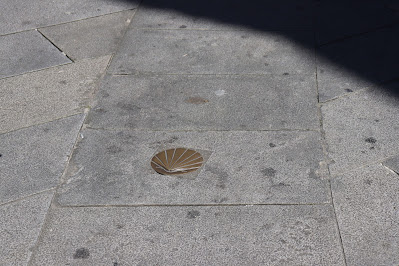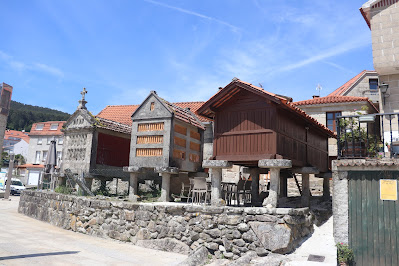 |
| Cruising up the Douro River |
We began cruising the Douro River this morning. Wine
has been produced here since 200 AD and port since 1600. England lost their
supply of French wine in the 17th century, when war broke out.
Portugal became a key supplier of wine, but the wine would spoil on the ocean
voyage. Adding a grape spirit to the wine would stop the fermentation process
leaving residual sugar. It was then aged in barrels creating port wine. In 1756, they
began the regulation of wine and port to ensure its quality. There are grape regions
along the Douro. The area around Porto gets the most rain and is called Baixo
Corgo. The Cima Corgo region is upriver, has over 400 steeps hills, and has
warmer summers and colder winters. The largest region is the Douro Superior
region with temperatures of 20 to 95 degrees. Here they harvest the grapes at
night because of the heat. This has the greatest variety of wines produced from
three different grapes.
 |
| Guimarães Castle |
In the afternoon, we bused to the town of Guimarães. Here was
fought the battle that resulted in the nation of Portugal when King Afonso fought
against his mother Theresa of Leon in 1128. He went on to defeat the Moors in
Lisbon and another battle against Leon, creating the Kingdom of Portugal. The
borders between Spain and Portugal are the oldest in Europe. Here we saw castle,
originally built of wood in the 10th century, then rebuilt in stone
14th century. Portugal’s dictator, Salazar reconstructed it in the
20th century.
 |
| Tapestry in Ducal Palace |
We toured the Ducal
Palace built by the Braganza Family in 1421. The family was the royal
family from 1640 until 1910. In the waiting room were two large tapestries. The
tapestries are modern copies of the original which were discovered in Spain cut
into strips.
 |
| Catherine of Braganza |
In another room was the portrait of Catherine of Braganza
who became the wife of the English King. She brought with her to England, the practice
of afternoon tea, fork utensils, and marmalade. Queens, New York is named after
her. We walked to the Center of town, where we saw the arch where the King of
Portugal was officially acclaimed. Our bus descended to the river on an
extremely curvy road, but our riverboat wasn’t there. The river current is
strong from the three months of rain. Our riverboat had trouble approaching the
lock below us. We admired the huge river perch that a fisherman showed us while
we were waiting.
 |
| Local Fisherman's Catch |











































